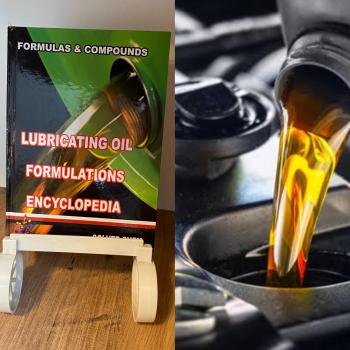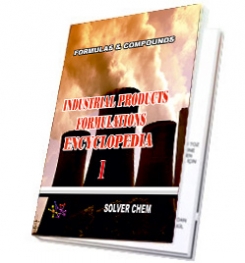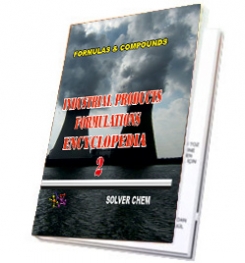
The search for a suitable biodegradable and low-toxicity lubricant involved a number of key issues such as:
- current and proposed environmental legislation relevant to lubricants
- existing products on the market and their performance
- demand for the product
- properties for the product
- current research
A central issue was to establish a clear definition of “green grease.” Most materials will degrade in some way over time. There are many processes responsible for these changes, most commonly biodegradation, oxidation and photolysis. Chemical and physical changes over time often occur simultaneously.
An understanding of biodegradation is vital to the development of clear parameters on material breakdown in a green grease. In biodegradation, the material is gradually broken down through the metabolic action of such living organisms as bacteria, fungi, yeast and algae. Hydrocarbons, which are the main constituent of biodegradable lubricants, are transformed into carbon dioxide and water by this process.
Naturally, this process is not entirely predictable as it can be influenced, for example, by the mix of living organisms, temperature and humidity. A material that may easily degrade under one set of circumstances may not readily degrade under others.
The minimum basic requirements are sufficient bacteria population, correct oxygen levels and a suitable temperature range. The rate of degradation is also affected by such factors as fluid viscosity, sunlight, mineral salt content, availability of nitrogen, pH levels, solubility and the ability of bacteria to adapt to the source of oil nutrient. Ultimately, of course, the lubricant should be reduced to its simplest natural form while leaving no harmful by-products that could have a detrimental and long-term effect on the local environment.
Traditional lubricants based on mineral and synthetic oils are ultimately biodegradable through the slow rate of decomposition. Under some conditions, they can exist as a contaminant in groundwater for close to a century.
Testing Considerations
When using any tests to establish the biodegradable performance of a new lubricant, one must bear in mind the often unpredictable and complex processes at work.
With no single universal standard that clearly defines biodegradability, a decision was made to use a number of existing tests. These were used to establish whether toxicity and biodegradability occurred within a reasonable length of time.
Basically, biodegradability means that micro-organisms in the soil, rivers and oceans can break down greases with relative ease.
From exhaustive studies, it was found that ester or vegetable fluids formulated carefully into lubricants perform well in real applications. In particular, it was noted that a combination of synthetic ester oil and a lithium/calcium thickener resulted in good properties in terms of water and corrosion resistance without the need to use toxic additives.
The new grease formulation, based on these constituents, performs well with ball, roller and plain bearings. This is a significant development, as conventional lubricating greases are normally considered suitable for only one bearing type. Each bearing class has a different contact surface, which can affect lubricant performance. For instance, the lubricant film in ball bearings has a point contact; in roller bearings it is a line contact; and for plain bearings it is full contact over the area. To assess performance, four different formulations were subjected to stringent bearing tests.
industrial lubricating grease oils
LUBRICATING OIL
FORMULATIONS
ENCYCLOPEDİA
is enough.
LUBRICATING OIL FORMULATION ENCYCLOPEDIA has many formulations of greases, complex grease, lithium grease production,sodium greases formula, formulation,multigrade engine oils manufacturing process,motor oils making, gear oil production, synthetic engine oils,semi synthetic motor oils,gasoline oils,diesel oils production process,composition of turbine oils,transmission oil manufacturing, production of cycle motor engine, tractor oils,mineral based motor engine production,heat transfer oils, slideway oils formulation, formulations, cutting oils formula,formulas grinding oils,mould oils manufacturing process and etc.
All lubricating oils in the encyclopedia are producible easily.You need no help and no technıcal support. The encyclopedia is enough to produce lubricating oils and engine oils itself.
LUBRICATING OIL
FORMULATIONS
ENCYCLOPEDIA
is written clear and understandable.


HARD BOOK E BOOK
RELATED TAGS: What is complex grease,making sodium complex grease oil, lubrication oils,lubricating oils,how to make lithium complex grease, calcium complex greases production process,where to use grease, using of grease,aluminum complex grease making, composition of complex greases, properties of grease,preparation of greases,compounds of greases, barium complex grease making, analysis of greases,why to use grease, types of grease,content of complex greases, formulation of complex greases, make complex grease,how to use complex grease, high performance complex grease oil making,sodium complex grease msds, what is black grease, how to make black greases, properties of black grease,how to color of greases, specification of lithium grease,technical analyzes of greases,mineral oil based grease making,make synthetic oil based grease oils, production of lubricating greases,what is industrial grease,industrial grease composition,compounds of industrial greases, grease lubrication,high temperature grease,how to make high temperature greases,extreme pressure grease production,extreme pressure industrial grease,composition of extreme pressure grease,high speed grease,low tgemperature greases,how to make high speed grease,composition of high speed and low temperature grease,how to make biodegradable grease,making biodegrable greases,properties of biodegradable grease,composition of biodegradable grease,formulation of biodegradable grease, formula,formulas,compounds of biodegrable greases.

|
|

|
|

|
|
